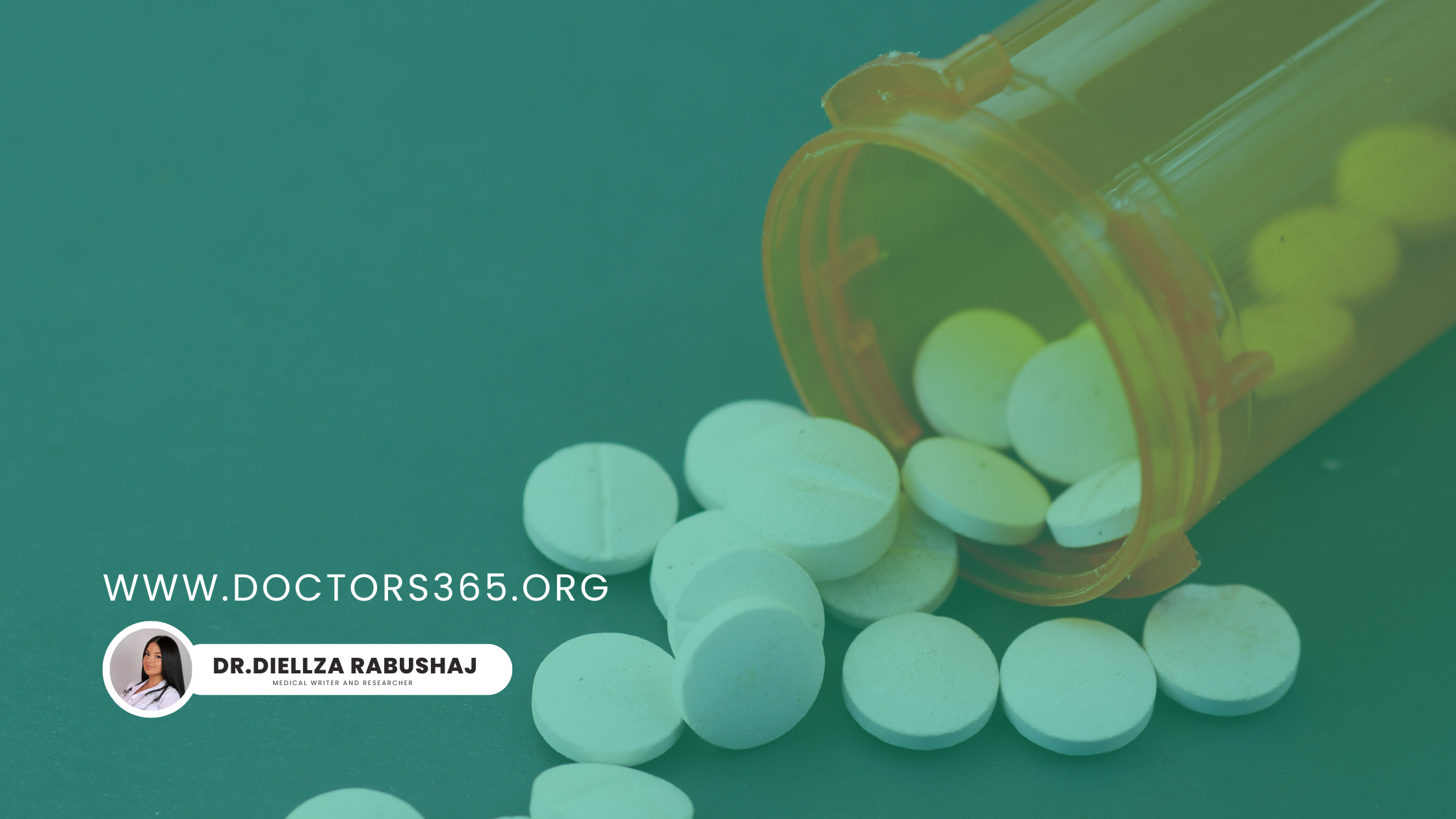
Cardiology
SGLT2s for Acute HF— Explained
A plain-English guide to SGLT2 inhibitors during an acute heart-failure admission and after discharge.
Learn how SGLT2 inhibitors started in hospital for acute heart failure can safely boost decongestion and cut rehospitalizations—what to expect and how to follow up online.
Educational only. This article is written in plain, easy-to-understand language for general readers and is not a substitute for professional medical advice, diagnosis, or emergency care. If you have chest pain, worsening breathlessness at rest, fainting, blue lips, confusion, or a rapidly swollen belly/legs, call your local emergency number immediately.
Author: Dr. Diellza Rabushaj
Medically reviewed by: Dr. Spec Orhan Karahodza
Why this topic? If you or a loved one is admitted with acute heart failure (AHF), you’ll hear many medication names. One group—SGLT2 inhibitors—began life as diabetes medicines but now play a growing role in heart failure care, including during a hospital admission. Below, we’ll walk through what they are, why they help even without diabetes, what the latest studies show, and how Doctors365 can support you from hospital discharge to home recovery.
2. What is acute heart failure (AHF)?
Acute heart failure means symptoms of heart failure worsen suddenly, often leading to an emergency visit or hospital admission. People can arrive short of breath, with fluid in the lungs (pulmonary edema), leg swelling, extreme tiredness, or fast/irregular heartbeat. AHF is dangerous because fluid builds up quickly, oxygen levels drop, and the heart struggles to pump effectively.
Doctors typically stabilize breathing and blood pressure, remove extra fluid with diuretics (like furosemide), treat triggers (infection, arrhythmia, heart attack), then optimize guideline-directed medical therapy (GDMT)—the long-term medicines proven to improve survival and keep you out of hospital.
3. Meet the “new” class: SGLT2 inhibitors
SGLT2 inhibitors (like dapagliflozin and empagliflozin) block a kidney transporter called sodium-glucose cotransporter 2. That makes the kidneys pass more glucose and sodium into the urine, taking extra water with them. Originally used to lower blood sugar in type 2 diabetes, they turned out to protect the heart and kidneys in people with or without diabetes. In chronic heart failure, these drugs reduce deaths and hospitalizations as part of modern GDMT. [6–9]
The natural next question: Do they also help when you’re in the hospital with AHF? Recent research says yes, and safely so, when started at the right time. [1,3]
4. How SGLT2 inhibitors help in AHF (the short version)
- Gentle decongestion: They promote salt-water loss through urine (a “smart diuretic” effect) that may work synergistically with loop diuretics, sometimes allowing lower loop doses. [1,3]
- Kidney–heart support: They reduce kidney stress, helping maintain stable kidney function while you’re being decongested. [3,7]
- Heart cell energetics: They nudge the body toward more efficient fuel (like ketone bodies), potentially helping a struggling heart. [2]
- Anti-inflammation & anti-fibrosis: They appear to calm inflammation and slow scarring in heart tissue, improving stiffness and relaxation. [2]
- Broad benefits regardless of diabetes: The mechanisms are largely non-hypoglycemic, so non-diabetics can also benefit. [2,6,8]
5. The evidence at a glance (AHF trials & meta-analyses)
What do the newest studies show when SGLT2 inhibitors are initiated during an AHF admission?
- A 2024 systematic review and meta-analysis of patients with acute heart failure found that starting an SGLT2 inhibitor during the admission was safe and associated with better short-term outcomes, including fewer rehospitalizations and an earlier clinical response versus usual care. [1]
- Another meta-analysis of randomized controlled trials in AHF showed SGLT2 inhibitors led to greater diuresis, improved symptoms, and reduced all-cause death and heart-failure readmission, without an increase in kidney injury. [3]
- Broader analyses across heart failure populations consistently report SGLT2 inhibitors as a top-tier therapy that complements ARNI (sacubitril/valsartan), beta-blockers, and mineralocorticoid receptor antagonists, with vericiguat and omecamtiv mecarbil offering additional benefit in selected high-risk patients. [4–6]
Bottom line: For many patients with AHF, once blood pressure and perfusion are stable, early in-hospital initiation of an SGLT2 inhibitor is a practical, safe step that supports decongestion and improves early outcomes. [1,3]
6. Mechanisms beyond blood sugar (made simple)
Think of heart failure as a crowded highway of fluid and pressure. SGLT2 inhibitors open an extra lane:
- Natriuresis & osmotic diuresis: By blocking SGLT2 in the kidney’s proximal tubule, these drugs pull sodium and glucose into urine, dragging water along and reducing fluid overload. This can be gentler than cranking up loop diuretics alone, potentially lowering loop requirements and limiting electrolyte swings. [2,3]
- Hematocrit & oxygen delivery: They often raise hematocrit a little, which may improve oxygen carrying capacity for tissues (a secondary, potentially helpful effect). [2]
- Energetic shift: Failing hearts struggle to use fuel efficiently. SGLT2 inhibitors are linked with a metabolic re-tuning toward ketone utilization and better myocardial energetics—think “a cleaner, more efficient fuel mix”. [2]
- Ion homeostasis & myocardial protection: Proposed effects on sodium–hydrogen exchange and calcium handling may help relax the heart muscle and reduce harmful stress signals. [2]
- Anti-inflammatory, anti-oxidative, anti-fibrotic effects: Chronic inflammation and scarring stiffen the heart. SGLT2 inhibitors show broad dampening of these pathways in experimental and clinical data, supporting structural and functional improvement over time. [2]
- Renal hemodynamics: They restore tubuloglomerular feedback, lowering intraglomerular pressure, which may protect kidneys during aggressive decongestion—key in AHF where kidneys are vulnerable. [2,3,7]
7. Safety in the hospital setting
Blood pressure: SGLT2 inhibitors cause modest BP reductions—usually well tolerated. In AHF, doctors wait until you’re stable (no shock, no escalating vasoactive support) before starting. [1,3]
Kidney function: An initial small dip in eGFR can happen but typically stabilizes; importantly, AHF trials did not show higher rates of acute kidney injury versus control. Good fluid management is essential. [3,7]
Electrolytes: Because of natriuresis, clinicians watch sodium and potassium closely. Combination with loop diuretics is common but requires lab checks. [1,3]
Diabetic ketoacidosis (DKA): Rare, mostly in people with diabetes and often euglycemic (normal glucose) when it happens. Hospitals reduce risk by withholding the drug during active critical illness, restarting once stable, ensuring adequate carbs/intake, and pausing for major procedures. [6,8,9]
Genital infections: Slightly increased risk; good hygiene and early treatment reduce problems. [6,8]
Bottom line: With careful timing and monitoring, the safety profile in AHF is favorable. [1,3]
8. Practical: when are SGLT2 inhibitors started during AHF care?
Most teams consider SGLT2 inhibitors once you’re hemodynamically stable—for example:
- Not on intravenous inotropes or vasopressors for low blood pressure.
- Oxygen needs and breathing are improving.
- Kidney function is acceptable and trending stable.
- No severe dehydration or high risk for DKA.
Typical doses are the same as in chronic care (e.g., dapagliflozin 10 mg daily or empagliflozin 10 mg daily), with no inpatient “titration” phase required. Your team coordinates discharge planning, so the medicine continues at home unless there’s a change in your condition. [6,7,9]
9. Who benefits most?
- With or without diabetes: Benefits in heart failure appear independent of diabetes status, thanks to non-glycemic mechanisms. [2,6,8]
- HFrEF (reduced ejection fraction): Strongest evidence base so far, including reductions in deaths and hospitalizations in chronic care, and early benefits in AHF. [3–6]
- HFpEF (preserved EF): Evidence in chronic HFpEF is growing; in AHF, decision-making is individualized, but the decongestive and renal effects still matter clinically. [1–3]
- Congestion-heavy presentations: Patients admitted with significant fluid overload often see earlier symptom relief and diuretic synergy when SGLT2 inhibitors are added appropriately. [1,3]
10. What to expect after starting
Day 1–3 (inpatient):
- Slight uptick in urine volume and weight reduction.
- Usually no dramatic blood sugar changes in non-diabetics.
- Kidney numbers (creatinine/eGFR) checked—expect a tiny dip that stabilizes. [3,7]
First 2–4 weeks (post-discharge):
- Breathing and swelling should continue to improve if you stick with all prescribed meds and salt/fluid advice.
- Watch for dizziness, thirst, or signs of infection; report them early.
- Keep logs of weight, BP, pulse, and daily symptoms; share with your clinician.
Longer term:
- In combination with other HF medicines (ARNI/ACEi/ARB, beta-blocker, MRA ± vericiguat/other as indicated), SGLT2 inhibitors help prevent return trips to hospital and support kidney health. [4–7]
11. How Doctors365 works (so you can move fast after discharge)
Step 1 — Browse: Go to doctors365.org and choose Cardiology or Internal Medicine.
Step 2 — Pick a time: Select a clinician and a same-day or next-day slot that suits you.
Step 3 — Confirm & pay: Book securely with instant confirmation.
Step 4 — Secure video visit: Join from your phone or laptop—no app required.
Step 5 — Summary & prescriptions: After your visit you receive a visit summary, advice on medication adjustments, and—if appropriate—e-prescriptions you can fill locally.
- Start here: /doctors/cardiology/all/
- Or browse: /doctors/internal-medicine/all/
(Internal links are shown without “https://” for readability and to keep you within Doctors365.)
12. Benefits of online cardiology care via Doctors365
- 24/7 access & speed: Urgent follow-ups in hours, not weeks—especially crucial right after an AHF admission.
- Privacy & comfort: Care from home with bank-level encryption.
- Convenience: No commuting, easy multi-disciplinary coordination (cardiology, nephrology, diabetes).
- Lower total costs: Fewer missed days of work, tight medication optimization, and early problem detection can reduce rehospitalization risk and downstream costs.
- Continuity: We help you stay on evidence-based therapy (SGLT2 inhibitor + the rest of GDMT) with structured follow-ups and labs reminders.
Ready to book a follow-up or second opinion?
→ /doctors/cardiology/all/
13. Quality & trust at Doctors365
- Verified clinicians: Every specialist is credential-checked and experience-verified.
- Clinical governance: We follow evidence-based pathways for AHF follow-up, medication optimization, and lab monitoring.
- Data security: End-to-end encryption protects your data; only your care team can access your records.
- Safety netting: We use red-flag checklists to route emergencies to in-person services promptly.
14. Recommended Doctors365 specialists (cardiology & heart failure)
Below are direct, bookable categories most relevant after an AHF admission. (If you prefer a named consultant, open the category to browse profiles and pick a clinician/time.)
- Cardiology (Heart Failure Focus): /doctors/cardiology/all/
- Interventional Cardiology (if procedures were discussed): /doctors/cardiology/all/
- Internal Medicine (complex multimorbidity): /doctors/internal-medicine/all/
Note: If you’d like us to highlight specific named Doctors365 heart-failure specialists here, tell us your city and we’ll surface 3–5 profiles instantly.
15. Online vs in-person: what’s appropriate?
Great for online follow-up:
- Medication optimization (e.g., starting/continuing dapagliflozin or empagliflozin, titrating other GDMT). [6–9]
- Symptom check-ins (breathlessness, exercise tolerance, swelling, side effects).
- Lifestyle & self-care (salt/fluid guidance, weight targets, action plans).
- Review of home measurements (weight, BP, pulse, oximeter).
Needs in-person or emergency care:
- Severe breathlessness at rest, pink frothy sputum, blue lips, chest pain, fainting, new confusion, fast worsening swelling, or oxygen levels < 90% → call emergency services now.
- Rapid weight gain (> 2 kg in 3 days) with worsening symptoms.
- Very low blood pressure, fever with rigors, or signs of DKA (if diabetic: nausea, vomiting, abdominal pain, feeling unwell). [6,8,9]
When you’re unsure, book a same-day online triage and we will guide you to the right setting.
16. Pricing & availability
Prices vary by clinician seniority, appointment length, and whether you need combined specialist input (e.g., cardiology + nephrology). You’ll see the price before you confirm the booking. Many patients secure same-day slots after discharge for medication review and symptom tracking.
Check current availability: /doctors/cardiology/all/
17. How to prepare for an online heart-failure consultation
Before your visit:
- Write down your AHF discharge plan: medication names, doses, and any “hold if” instructions.
- Gather latest labs (creatinine/eGFR, sodium/potassium, HbA1c if diabetic).
- Prepare your home measurements log for the last 7–14 days:
- Daily morning weight (same scale, same time, minimal clothing).
- Blood pressure & pulse (seated, rested 5 minutes).
- Symptoms (breathlessness grade, swelling, fatigue, sleep quality).
- Note any side effects since starting SGLT2 inhibitors: dizziness, thirst, increased urination, genital symptoms.
- Keep questions ready (e.g., “Can I travel?”, “What if I miss a dose?”, “How much water should I drink?”).
During the visit:
- We’ll review your congestion status, kidney function, and other GDMT to ensure your SGLT2 inhibitor fits well with ARNI/ACEi/ARB, beta-blocker, MRA, ± vericiguat if high-risk. [4–7]
- If your loop diuretic dose can be reduced safely (a common goal as congestion resolves), we’ll discuss how to taper while watching weight and symptoms. [1,3]
- We’ll agree an action plan: what to do if weight jumps, how to handle sick days, when to pause SGLT2 inhibitors (e.g., major surgery, severe dehydration), and which red flags demand urgent care. [6,8]
After the visit:
- You’ll receive a written summary with monitoring schedules and lab reminders.
- Follow-up is usually 2–4 weeks, sooner if symptoms change.
18. FAQs
1) Do SGLT2 inhibitors work if I don’t have diabetes?
Yes. Their heart benefits rely on non-blood-sugar mechanisms (natriuresis, energetic shifts, anti-inflammation). Trials show benefit regardless of diabetes status. [2,6,8]
2) Will they drop my blood pressure too much?
The average BP effect is modest. In AHF, clinicians start only when you’re stable and monitor closely. [1,3]
3) Do they damage the kidneys?
Not typically. You might see a small initial dip in eGFR that stabilizes; overall they are considered kidney-protective and did not increase acute kidney injury in AHF trials. [3,7]
4) Can SGLT2 inhibitors replace my other heart medicines?
No. They’re one pillar of GDMT, alongside ARNI/ACEi/ARB, beta-blocker, MRA, ± vericiguat in selected cases. Your team will personalize the combination. [4–7]
5) What side effects should I watch for at home?
Common: increased urination, mild thirst. Possible: genital yeast infections (treatable). Rare: DKA (mainly in diabetics); we’ll give you a sick-day plan to minimize risk. [6,8,9]
19. Conclusion + strong CTAs
Starting an SGLT2 inhibitor during an AHF admission—once you’re stable—can help remove extra fluid, protect the kidneys, and reduce early rehospitalizations, with benefits that extend beyond blood sugar control. The evidence base has matured quickly, and these medicines now sit alongside other cornerstone therapies for heart failure. [1–7]
If you’ve just been discharged, the next two weeks are critical. Let’s optimize your medications, monitor labs, and lock in a plan to keep you out of hospital.
- Book a heart-failure follow-up now → /doctors/cardiology/all/
- Need rapid medication advice? → /doctors/internal-medicine/all/
20. References
- Hou J, Ren L, Hou Q, Jia X, Mei Z, Xu J, Yang Z, Li Y, Yan C. Efficacy and safety of sodium-glucose cotransporter 2 (SGLT2) inhibitors in patients with acute heart failure: a systematic review and meta-analysis. Front Cardiovasc Med. 2024;11:1388337. https://doi.org/10.3389/fcvm.2024.1388337
- Zhou Y, Zhu F, Zhou R. SGLT2 inhibitors for alleviating heart failure through non-hypoglycemic mechanisms. Front Cardiovasc Med. 2024;11:1494882. https://doi.org/10.3389/fcvm.2024.1494882
- Sun Y, Wang Y, Zhang X, et al. Cardiovascular and renal effects of SGLT2 inhibitor initiation in acute heart failure: a meta-analysis of randomized controlled trials. Clin Res Cardiol. 2022;111(12):285-298. https://pmc.ncbi.nlm.nih.gov/articles/PMC9807098/
- Liu H, Liu Y, Tang Y, et al. Prognostic benefit of new drugs for HFrEF: a systematic review and network meta-analysis. Cardiovasc Drugs Ther. 2022;36(3):251-262. https://pmc.ncbi.nlm.nih.gov/articles/PMC8777808/
- Liu Z, Liu Y, Sun L, et al. Efficacy of three novel drugs in the treatment of heart failure: a network meta-analysis. Cardiovasc Drugs Ther. 2022;36(4):365-376. https://pmc.ncbi.nlm.nih.gov/articles/PMC9302283/
- Wang Q, Zhao L, Li H, et al. Sacubitril/valsartan, sodium-glucose cotransporter 2 inhibitors and vericiguat for congestive heart failure therapy. J Card Fail. 2022;28(9):726-734. https://www.ncbi.nlm.nih.gov/pmc/articles/PMC9306855/
- Chen Y, Zhu F, Zhou R. Current status of dapagliflozin in congestive heart failure. Cardiol. 2023;23(4):958-966. https://pmc.ncbi.nlm.nih.gov/articles/PMC9586194/
- Lee H, Kim S, Park J, et al. SGLT-2 inhibitors in heart failure: a review of current evidence. Korean J Heart Fail. 2023;15(2):123-134. https://pubmed.ncbi.nlm.nih.gov/37180562/
- Khalid A, Rodriguez M, Tasouli-Drakou P, et al. Breaking new ground in heart failure management: novel therapies and future frontiers. Front Cardiovasc Med. 2025;12:2025.
Written by Diellza Rabushaj, Medical Writer & Researcher.
Recommended articles for You

A plain-English guide to SGLT2 inhibitors during an acute heart-failure admission and after discharge.

See who benefits, safety, costs, and book an online visit at Doctors365.

Esketamine nasal spray is a new hope for treatment-resistant depression. Learn about safety, side effects, and Doctors365 psychiatry support.